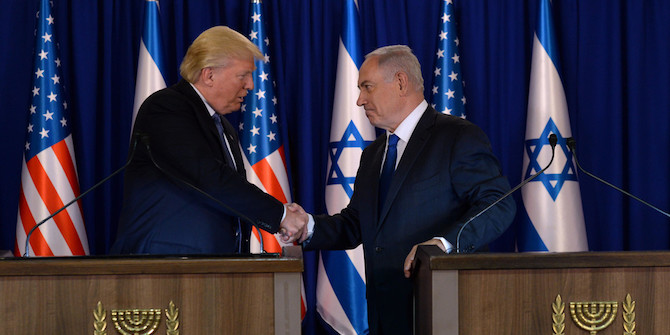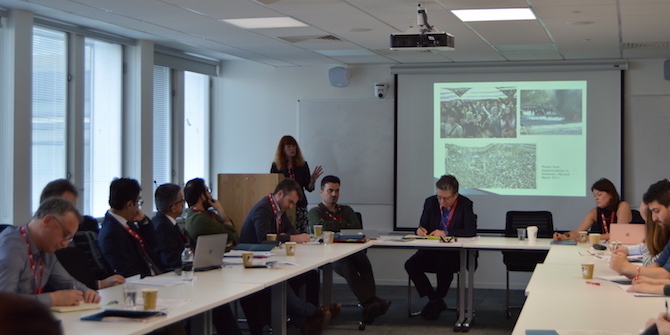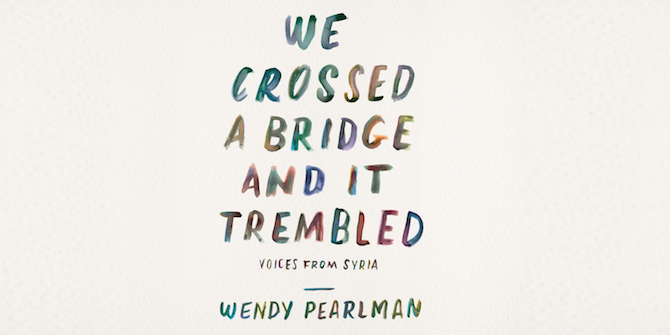by Ian Black

Lurid posters praising Donald Trump are still on display in Jerusalem – thanking the president for moving the US embassy from Tel Aviv to the city’s Talpiot neighbourhood. The building that used to be the American consulate is close to the old ‘green line’ border that separated Israel from the Jordanian West Bank until the 1967 war. Expressions of gratitude to the ‘friend of Zion’ in the White House are mostly seen in West Jerusalem, but there are placards and banners in eastern parts of town that have been treated by successive Israeli governments as part of their ‘eternal and undivided capital.’
It bears repeating that Jerusalem is anything but undivided. Israeli and Palestinian neighbourhoods are separate. Liberty Bell Park and the Malha shopping mall are among the few shared public spaces. Palestinians are employed by Israelis but the opposite is rare. Arabs make up 37 per cent of the city’s population, have Israeli ID cards and speak Hebrew; few Jews speak Arabic. Very few Palestinians vote in municipal elections for fear of legitimising Israel’s annexation, and they do not have the right to vote in national elections.
The city has grown a lot since I last lived there in the early 1990s: new suburbs like Gilo and Har Homa – illegal settlements under international law – surround it. The traffic is terrible, especially in the once sedate Rehavia area around the heavily-guarded prime minister’s residence on Balfour Street. But urban development remains lopsided and intensely political: Salah al-Din street, the commercial heart of East Jerusalem, has not changed in forty years. Residency requirements for Palestinians are oppressive. Far-right Israeli organisations target Arab homes in and around the Old City. Shuafat refugee camp, cut off by the West Bank separation wall, is neglected and violent.
I visited in late May, shortly after the US embassy inauguration and the killing of sixty mostly unarmed Palestinians by Israeli troops on the Gaza border – bloody reminders of the deadly volatility of the status quo. My aim was to talk to Israeli officials and experts about regional changes. These days the big picture of the world’s most intractable conflict has to include the growing convergence of interests between Israel and the Gulf States, led by Saudi Arabia. Joint hostility to Iran is a powerful driver, as is the disruptive man in the Oval Office, feted in Jerusalem and Riyadh for walking away from the 2015 nuclear agreement with Tehran.
My trip – which precedes visits to the Gulf later this year – was for a research project I am leading at LSE’s Middle East Centre. The plan is to provide a coherent account and assessment of developments by meeting Israeli, Arab and western officials, journalists, businessmen and experts to discuss the evolving ties between Israel, Saudi Arabia, the UAE, Bahrain and Qatar.
Reports of secret Israeli–Gulf intelligence coordination, under-the-counter trade and other forms of cooperation have intensified recently. Iran’s backing for Hizbullah in Lebanon, its key role in defending the Assad regime in Syria and its links to the Houthi rebels in Yemen are all factors. The UAE and Bahrain are warming to Israel too in more visible ways. Israelis are delighted with Mohammed bin Salman, the Saudi crown prince – and especially his headline-grabbing remarks to American Jewish leaders about Israel’s right to its own land.
It is not easy to gauge exactly what this tacit alliance consists of. Israeli officials are careful not to go beyond or interpret Binyamin Netanyahu’s carefully-formulated statements about a ‘historic change’ in relations with the Arab world. Bibi’s boasts are met by silence or denials in Riyadh, Abu Dhabi and Manama. Egypt and Jordan are hardly less sensitive even though their peace treaties with Israel date back to 1979 and 1994 respectively. Cairo’s war against ISIS in Sinai involves Israeli air strikes and close intelligence links. Israel’s relations with Jordan are also deep but even more sensitive because of the kingdom’s large Palestinian population.
Israeli officials argue that the relatively muted official Arab response to Trump’s embassy decision was an indicator of new pragmatism on the Palestinian question. Still, soon afterwards King Salman convened the ‘Summit of Al-Quds’ (Jerusalem), sending an unmistakable signal that there were limits to how far he is prepared to go – whatever his ambitious son has hinted at.
It is in this context that speculation is daily mounting about Trump’s much advertised ‘deal of the century.’ This is rumoured to offer the Palestinians their own capital in the nondescript East Jerusalem suburb of Abu Dis, but nothing on the core questions of borders, settlements or refugee rights, and thus not enough to constitute a workable two-state solution. Palestinian Authority President Mahmoud Abbas, who condemned the US embassy decision as the ‘slap of the century’ (it’s a good pun in Arabic), is refusing to deal with the Americans. Talk of generous Gulf financing for Gaza and the PA is unlikely to change that.
The buzz-word for what Trump is looking at is an ‘outside-in solution’ – Israel making peace first with Arab states and then dealing with the Palestinians from a position of greater strength. This is not new. The idea was around as long ago as 1918 when Chaim Weizmann, the leader of the Zionist movement, met Emir Faisal, the son of Sharif Hussain of Mecca. The first sign that this approach might work was Anwar Sadat’s peace initiative in 1977, though that was condemned as treachery by all other Arabs. Jordan maintained secret links with Israel for years but only made peace after the PLO’s agreement with Israel at Oslo in 1993.
References to all these were bandied around at a conference I went to at the Hebrew University on Mount Scopus, with its stunning views over the West Bank. It was organised by Mitviim, the Israeli Institute for Regional Foreign Policies. Speakers focused on the huge economic potential of a comprehensive peace agreement but the consensus was that whatever happens regionally, that small local difficulty of the Palestinian question is not going to go away. In mid-June Netanyahu held talks – accompanied by the head of the Mossad – with King Abdullah in Amman. Shortly afterwards a prominent Israeli journalist quoted an unnamed Jordanian friend as revealing excitedly that Bibi had also met Bin Salman. No official comment was made in Jerusalem or Riyadh, though the story was described as ‘incorrect’ in Amman. Still, the impression is growing that significant new Middle Eastern relationships are deepening. Where they will lead is a fascinating and important question.
For more on Ian Black’s research programme at the LSE Middle East Centre, see here.






